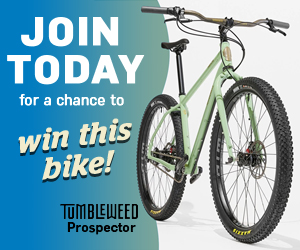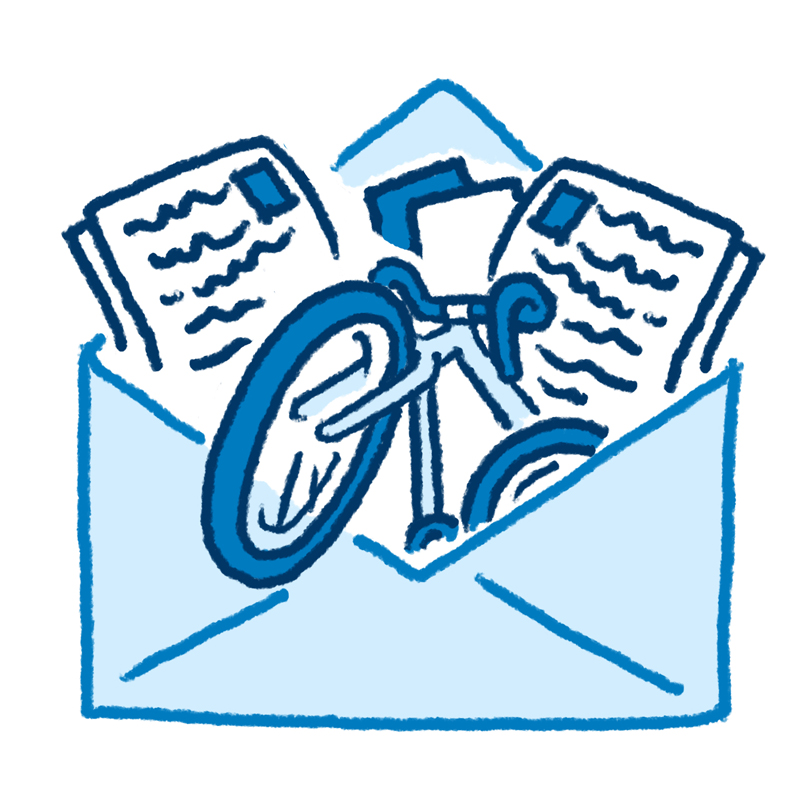The Gear You Need to Get Started Bike Touring
My first exposure to bike touring was Alastair Humphreys’ book, Moods of Future Joy. In it, he chronicles the first part of his four-year tour around the world, which was a tour from his childhood home in England all the way to Cape Town, South Africa. I was so impressed with his journey that I bought his book for anyone I thought would read it and started dreaming of my own around-the-world adventures. The only problem was that I had never really been camping or ridden my bike more than a handful of miles at a time.
I was swept away by the romanticism of leaving on a bicycle from home and traveling to far away places, but couldn’t fathom how anyone could travel for thousands of miles carrying only what they needed on their bicycle. Eventually I realized that not every trip has to be epic, and even a short weekend trip can be a much welcomed adventure from day-to-day life. Not to mention, every time I go on one, I am more inspired to set out on my own trip around the world.
Over the years and after many bicycle-centric vacations and trips, I have also finally come to realize that planning a bike tour doesn’t haven’t to be complicated, and even if you’re starting where I did, you’re probably a lot closer than you think to your first trip. Watch this video to see what I mean.
There are a few categories of gear you need and things to consider, but they are all interrelated in how they might impact your trip. I think about it like the following graphic:

Bicycle (and Helmet!)
The bottom line is that any bicycle can work for a bike tour, although not all bike tours can work with any bicycle. For example, I wouldn’t recommend trying the Great Divide Mountain Bike Route with a road bike, but I wouldn’t be surprised if someone already has, or is planning to do so.
That said, a couple of my favorite examples of people making a bike tour work with seemingly incorrect equipment are Ryan van Duzer’s trip across America on a three-speed bike and Ed Pratt’s journey around the world on a fixed-drive unicycle, both of which are well-documented on YouTube. I don’t know either of them personally, but I can only imagine that in some ways, they planned their routes around the limitations of their bicycles, and the same can apply to you when planning.
If you don’t already have a bicycle or are looking to buy a new one, there are countless resources and reviews on the internet, but if you’re on a budget or are unsure about if you want to make bike touring one of your main hobbies, I would prioritize any bicycle in good working order with at least 10 gears, eyelets for a rear rack, and rim or disc brakes. After a few tours, you’ll start to get a better sense of what is important to you and how much you are willing to spend, and you’ll feel a lot more confident in your first big bike purchase.
Shelter
One of my favorite weekend bike tours was to my grandpa’s house in Los Angeles, about 100 miles from where I live. All I carried was a backpack with a water bladder and a few essentials, but the trip was infinitely more fun than the drive would have been, and it even gave us something to talk about when I arrived.
If you start with a tour like mine, you won’t have to worry about which combination of tent, sleeping pad, and sleeping bag will save you from having a miserable and cold night, and you won’t have to worry about a lot of other camping related decisions either.
From there, you can work your way up to camping remotely perhaps by starting out car camping or even spending the night in a tent in your backyard.
Food

I have a friend that started running marathons just so he could eat whatever he wanted. I always thought it was funny until I went on a longer bike tour and realized that afterwards, I simply could not consume enough calories. Unfortunately, some of those eating habits seem to have stayed with me even when I’m not riding my bike everyday, but I think for bike touring there is a little more to it.
There is, of course, the literal connection between needing calories to fuel your muscles, but there is also a mental component. On a recent bike tour, I underestimated the effort required to climb back over the mountains that separated my home from the desert where I had camped. On the way up, I found myself becoming super negative and even thinking about hitchhiking over the mountain out of laziness. When I finally made it to a small mountain town and ate lunch, I was a new person and all the joy came back to the trip.
I’ve also found that being too hungry on a bike tour can impair decision making, not to mention if you have any underlying health issues that may amplify the impact of low blood sugar.
Water
Running water is probably the luxury I most take for granted in modern life, and I never seem to realize it until I miscalculate what I need on a bike tour and am panicked at the thought of one of my bottles leaking. I’ve had a couple of close calls and because of those will always err on the side of carrying too much water, despite the extra weight.
Take this one seriously, because dehydration in severe cases can lead to organ failure and even death. And if you run out of water far from sources or people, it can be a challenging situation to remedy.
Most sources recommend drinking one liter (about 32 ounces) for every 1-2 hours of physical activity in moderate climates. Drink more at elevation, in hot weather, or at high exertion levels. This is simple in populated areas or anywhere else with easy access to potable water because you can just fill up your bottles when necessary. But if you’re touring in an arid climate, this can mean carrying enough water for extended periods of time.
Miscellaneous

There are plenty of other things to carry and many of them are the same as what we’d pack on any trip — clothes, toiletries, headache and stomach medicine, books, a journal, etc. There are also some bicycle-related things that apply to any longer ride. I don’t leave home without a multi-tool with a chain breaker, a spare inner tube and patch kit, and a pump. Flat tires, chain issues, loose bolts, and misaligned brakes are probably among the most common mechanical failures that can leave you stranded, but they are relatively easy to learn to fix roadside with only a couple of basic tools.
Baggage
Once you’ve figured out all of the things you need and want on your bike tour, you have to figure out how to carry everything. The easiest way is in a backpack, and it is also likely one of the least expensive ways to get started. However, if you’ve ever been backpacking or hiking with a backpack, you know that it can get uncomfortable, especially if you’re carrying a lot of gear, water, and food.
I generally find it more comfortable to move everything off my back and onto the bike, if possible. When you’re ready to make that investment, a rear rack and waterproof panniers will likely cover most of your baggage needs. After that, there are many options of bags and attachment methods and points to consider that can all be fun to research.
Route Plan

Planning an overnight bike tour to visit family in a neighboring city is much different than a multi-day trip through rural stretches of the Sonoran Desert. Not only will there be impacts on all the other planning categories, but there will also be considerations about which roads or paths to take as well as your ability to call someone you know for help.
I have planned many trips using one of the big mapping applications on my cell phone. The bicycle option has generally worked for me, but it does often seem to think that I want to ride on very busy roads that lack good bicycle infrastructure. Alternatively, there are many routes online that have been thoroughly scouted by other bike tourers.
Some of my favorites include Adventure Cycling’s epic routes across the country, which I have found to be incredibly well thought out, researched, and kept up-to-date. If you’re in the US, it is likely that one of those routes passes near your home, and you could plan a trip along a one or two day segment of the route. Adventure Cycling also has a growing list of Short Routes designed specifically for weekend trips.
Putting it all Together
I hope that after reading this, you are inspired to plan your first bike tour around the gear you have access to and your comfort level. The most important thing is to get started with a tour you know you can do and gradually plan more complex or self-supported tours from there. After a few trips, I bet you’ll be feeling more comfortable with pedaling from home to the edges of the earth and around the world.


